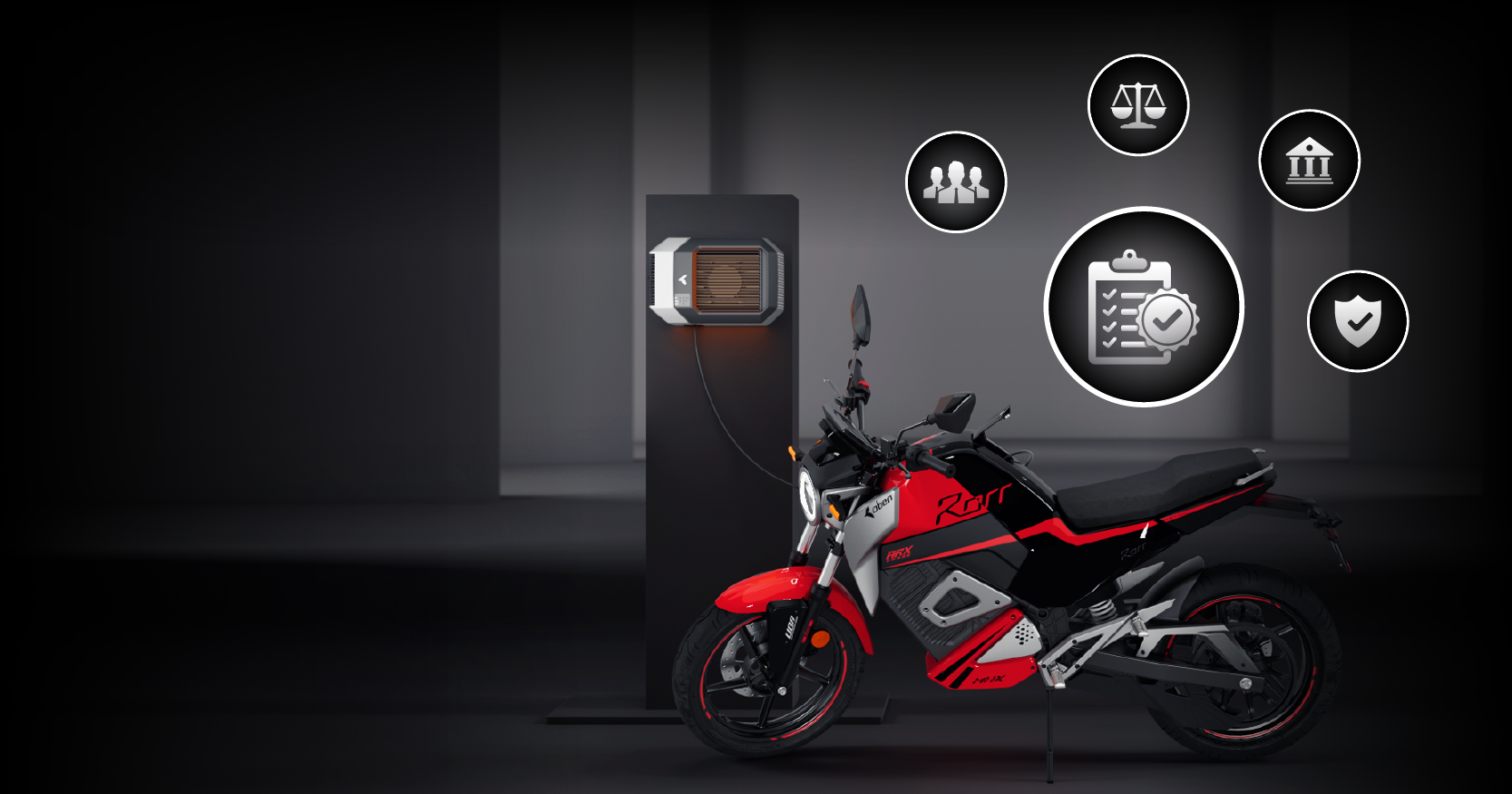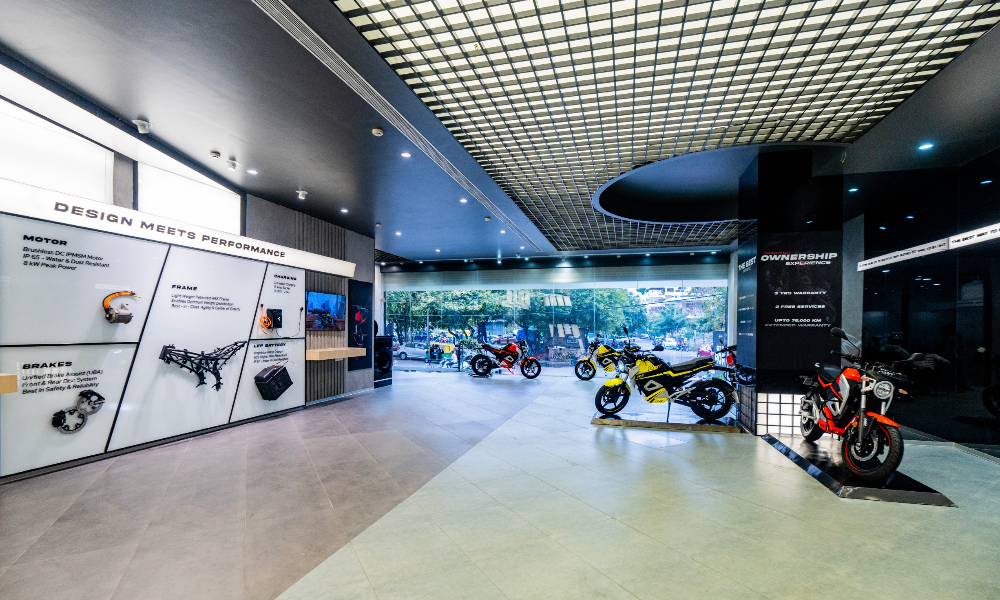- ALL
- TRENDING
- PERFORMANCE
- CHARGING
- BATTERY
- DESIGN
- TECH
- NEWS
Government Subsidy for Electric Bikes in India: A Complete Guide

Table of Contents
1. What is an Electric Bike Subsidy?
1.1. Key Components of an Electric Bike Subsidy
2. Why Electric Bike Subsidies Still Matters in 2026?
3. PM E-DRIVE: Official Subsidy Rates & Caps for 2026
3.1. Eligibility Criteria to Qualify for PM E-DRIVE Electric Bike Subsidy
3.2. How to Apply for PM E-DRIVE Electric Bike Subsidy?
4. State-Wise Subsidy for Electric Bikes in 2026
5. Practical tips for EV buyers in 2026
As fuel prices keep rising and pollution concerns grow, electric bikes are becoming the smart choice for everyday commuting in India. But there's another major reason behind their popularity, “Government Subsidies.”
These government subsidies on electric bikes in India make them more affordable. If you're planning to buy an electric bike, this guide will help you understand every detail in the simplest way possible.
Let’s break down the electric bike subsidies in India.
What is an Electric Bike Subsidy?
An electric bike subsidy is a financial incentive provided by the Central and State Governments in India to reduce the upfront cost of buying an electric two-wheelers in India. It encourages the use of cleaner transport by offering financial support to individuals switching to electric bikes.
In short, you pay less because the government covers a part of the cost.
There are two types of subsidies:
1. Central Government Subsidy – PM E-DRIVE, EMPS 2024 & FAME-II (EMPS 2024 & FAME-II are no longer applicable. They have been replaced by PM E-DRIVE scheme)
2. State Government Subsidies – Different for each state
These subsidies apply only when the electric bike meets certain eligibility criteria.
Key Components of an Electric Bike Subsidy
Why Electric Bike Subsidies Still Matters in 2026?
Subsidies continue to be crucial because:
- They close the price gap vs petrol bikes (a big barrier for mass adoption).
- They accelerate payback via lower running costs and tax benefits.
- They support domestic manufacturing by creating demand certainty for OEMs.
- They complement infrastructure & policy measures (charging, local incentives), making EV ownership practical in more cities.
PM E-DRIVE: Official Subsidy Rates & Caps for 2026
| Financial Year |
Rate (₹ per kWh) |
Max subsidy per vehicle |
Price cap rule |
| 2024–25 |
5,000 / kWh |
Capped at ₹10,000 per vehicle |
to be capped at maximum of 15% of ex-factory price |
| 2025–26 |
2,500 / kWh |
Capped at ₹5,000 per vehicle (Lower cap vs 2024–25) |
to be capped at maximum of 15% of ex-factory price |
*Central government subsidies are subject to change. Please check the central government's official website for accurtate details.
Read more about past central government subsidies like FAME-II & EMPS 2024 on our blog.
Eligibility Criteria to Qualify for PM E-DRIVE Electric Bike Subsidy
To get a subsidy, the bike must meet the government’s criteria:
1. Vehicle Registration
The bike must be registered as a Motor Vehicle under CMVR.
2. Advanced Battery Requirement
Your electric bike should be fitted with only advanced batteries such as:
- Lithium Iron Phosphate (LFP)
- Lithium Polymer
- Lithium Cobalt Oxide
- Sodium-Ion
- Solid State etc.
Oben Electric bikes are fitted with Lithium Iron Phosphate battery which quality for PM E-DRIVE scheme.
3. Performance Criteria
Electric bike satisfying the performance criteria as given below:
| Criteria | Value |
| Vehicle Category* |
L1 (light two-wheeled vehicles) & L2 (Two-wheelers that do not fall in L1 category) |
| Minimum Range** | 80 km |
| Max Electric Energy Consumption** |
7 kWh/100 km |
| Minimum Top Speed*** | 40 km/h |
| Minimum Acceleration*** | 0.65 m/s² |
* As defined in the Central Motor Vehicles Rules (CMVR), 1989.
** As per applicable test standard / Procedure mentioned in CMVR, 1989.
*** Measurement shall be carried out at Gross Vehicle weight (GVW)”.
4. Ex-Factory Price
Must be ₹1.5 lakh or below.
5. Total Supported Vehicles:
- 10,64,000 EVs in FY 2024-25
- 14,15,120 EVs in FY 2025-26
6. OEM Registration
OEM is required to be registered with MHI. Further, each of their EV models will need to be approved by MHI.
Oben Rorr EZ Sigma, Rorr EZ & Rorr meet all subsidy criterias under PM E-DRIVE scheme.
Checkout the eligibility critera for older central government EV subsidies like FAME-II & EMPS 2024 on our blog.
How to Apply for PM E-DRIVE Electric Bike Subsidy?
Good news! You don’t have to apply manually. The subsidy is auto-applied by the dealer.
Here’s the simple step-by-step process:
Step 1:
Book your Oben Rorr EZ Sigma or Rorr EZ electric bike from an Oben Electric showroom or online.
Step 2:
Submit your KYC documents to the authorised dealer.
Step 3:
The dealer generates an e-Voucher on the PM E-DRIVE portal.
Step 4:
Subsidy is deducted from your bike’s ex-showroom price.
Step 5:
You pay the remaining amount.
Step 6:
Take delivery of your electric bike.
State-Wise Subsidy for Electric Bikes in 2026
State policies vary widely; some provide cash per-kWh top-ups, some provide tax/registration fee waivers, and occasionally states use temporary tax cuts to boost sales.
Below are examples of active/state-announced incentives as of late-2025/early-2026 (verify current portal on purchase):
Different states offer additional benefits. Here are current highlights:
| State |
Subsidy / Benefit |
Tax Exemption |
| Maharashtra |
10% (up to ₹10,000) |
Road tax exemption* |
| Delhi |
₹5,000/kWh |
Registration fee waived* |
| Gujarat | ₹10,000/kWh (up to ₹20,000) | 50% Road tax relief* |
| Tamil Nadu | No cash subsidy | Full tax & registration waiver* |
| Karnataka | No cash subsidy | Full tax & registration waiver* |
*Subject to state regulations & updates
Practical tips for EV buyers in 2026
1. Confirm model certificate: Ask the dealer for the PM E-DRIVE / MHI approval certificate for that exact model and manufacturing month. Without it, no central subsidy.
2. Check state portal: State support often has caps, deadlines and registration conditions. Use the state EV portal before booking.
3. Watch timelines: Central two-wheeler incentives were structured to end (March 31, 2026) unless extended; verify the active window for your registration date.
4. Read the invoice: Subsidy should be shown as a separate line item (e-voucher reference). If not, ask questions.
5. Battery warranty & specs: Subsidy often requires specific battery tech; verify warranty and battery capacity to ensure your model truly qualifies.
If you're planning to buy an electric bike in 2026, make sure it qualifies under PM E-DRIVE and check if your state offers additional benefits. With central and state-level support, buying an electric two-wheeler has never been easier.
Also Read:
1. EMPS 2024
2. PM E-DRIVE
3. Lithium Iron Phosphate battery
5. Petrol vs Electric Bike Running Cost
7. Rorr EZ
8. Rorr




